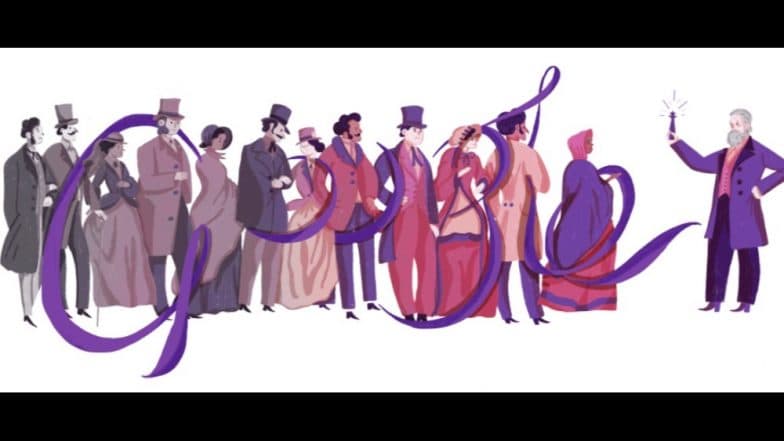Google Doodle celebrates the 180th birthday of Sir William Henry Perkin who accidentally invented the first synthetic dye.
Celebrating the 180th birthday of British chemist Sir William Henry Perkin, today's Google Doodle features the purple colour to commemorate his accidental invention of the first synthetic dye.
Born on 12 March 1838, William Henry Perkin's discovery of 'mauveine', the first synthetic dye, was found at the time when the textile industry was at a high. According to Google's blog post, an 18-year-old laboratory assistant, Perkins was cleaning out a beaker following a failed experiment when he noticed that the constituents of the beaker left a vivid purple stain when diluted with alcohol.
Who was Sir William Henry Perkin?
Born in London's East End on March 12, 1838, William Perkin was the son of a successful carpenter which allowed him to attend the prestigious City of London School - setting him on a path of scientific discovery.
In 1853, at the age of just 15, Perkin began working with esteemed German chemist August Wilhelm von Hofmann at what is now known as Imperial College London.
The pair were researching and experimenting with quinine, a chemical that was first discovered in the bark of certain trees, and how it could be used to combat malaria.
While carrying out experiments at his flat, Perkin discovered that aniline, a compound, could be used to create a substance of a rich, deep purple colour when it was combined with alcohol.
The reason this was significant? Perkin had accidentally discovered a way of creating and mass producing a dye which could be used to colour fabrics – which up until then had to be coloured with expensive natural substances that could never be used in large quantities.
In an even better stroke of luck, the rich purple colour Perkin had stumbled across was in demand due to its long-time association with royalty and aristocracy.
It was at this point Perkin and his brother realised they had a very lucrative creation on their hands.
From there, Perkin built factories, raised funds and demand went through the roof when the colour was adopted by no less than Queen Victoria herself.
Perkin passed away in 1907 after suffering from pneumonia and is buried in Harrow. All three of his sons followed in his footsteps and became chemists.

Comments
Post a Comment